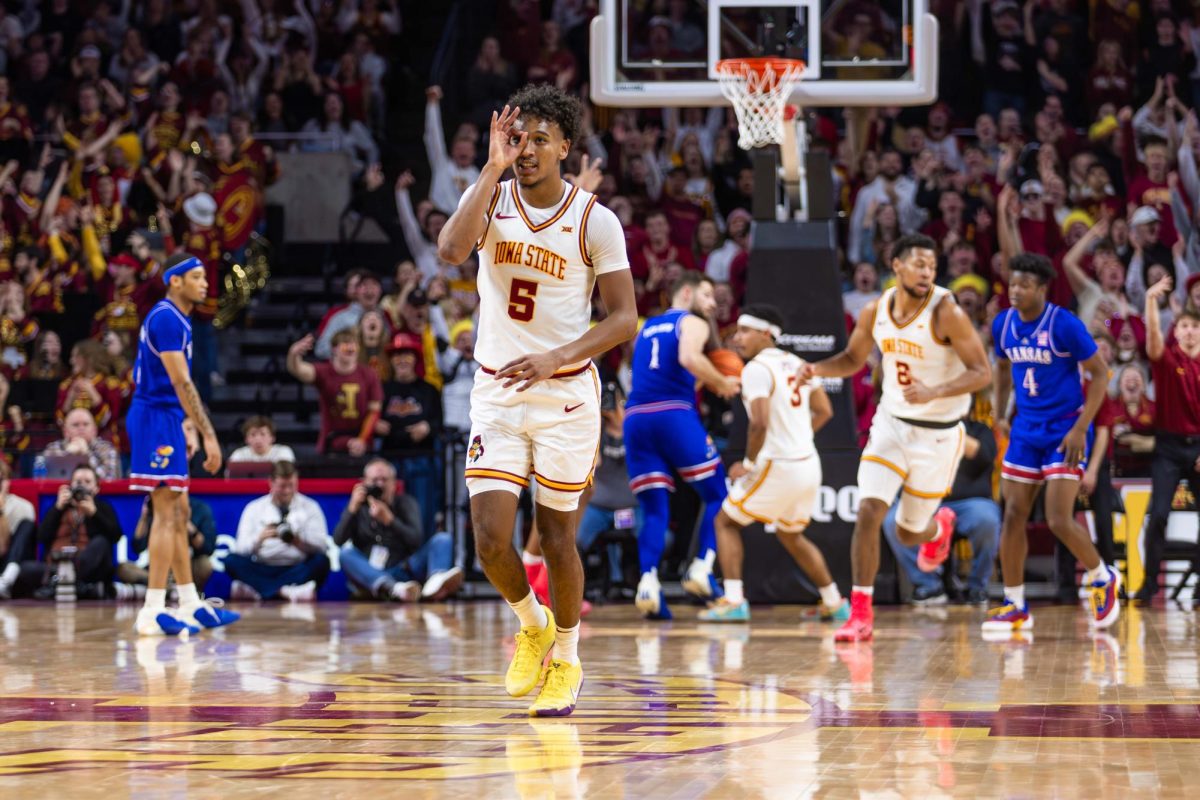Budget woes cut around academic core
April 14, 2003
First in an ongoing series about Iowa State’s response to state budget problems.
For the past three years, ISU students and staff have seen dramatic tuition increases and other effects related to budget cuts. ISU officials said the tradition of budget problems has had many negative effects on the university.
“[We] do everything we can to protect the academic core from budget cuts so we can keep education strong,” ISU President Gregory Geoffroy said.
Gary Steinke, director of governmental relations for Iowa State, has been working for the university since 1994.
He said at that time, the university enjoyed only a 2 to 3 percent increase in its operating budget each year. For three years, faculty and staff salaries were fully funded by state appropriations.
In the past two years, about $50 million, or about 19 percent of Iowa State’s budget, has been cut, said Warren Madden, vice president for Business and Finance. About $124.6 million has been cut from the state’s Regent universities.
Geoffroy said it’s too early to tell if there will be further budget cuts for the 2004-05 fiscal year.
“We know that right now the Legislature has about $127 million hole they need to fill,” Geoffroy said.
If the Legislature cuts its allocation to the Iowa Board of Regents, as much as 3 percent of the current budget could be lost, which equates to about $7 million for Iowa State, Geoffroy said.
Steinke said the Legislature has already indicated university staff salaries are not going to be fully funded for the next fiscal year, so Iowa State will have to fund the rest of staff salaries by taking money out of the university’s operating budget.
“I think it’s an absolute shame,” Steinke said.
The cuts in the operating budget eventually trickle down and equate to possible tuition increases or a reduction in the number of services students are offered, he said.
The major effect of budget increases on students has been in doubt-digit tuition increases, Madden said.
Steinke said students have seen a tuition increase of more than 50 percent in recent years.
“Something’s got to give,” he said.
Another effect of cuts on students and staff is larger class sizes. Classes have become bigger and some classes may be more difficult to get into than they were three years ago, Steinke said.
Madden said the administration will try to minimize the effect of budget cuts on programs for students.
Budget cuts may also lower the number of salary increases for faculty and staff, he said.
Steinke said Geoffroy has indicated he is unwilling to downgrade the quality of programs at Iowa State.
“Unfortunately, to have quality programs you’re going to have to have quality faculty … those go hand in hand,” Steinke said.
Madden said the university has made efforts to make cuts that do not minimize the quality of education received.
Reduced building maintenance and increased energy conservation are two examples of places cuts have been made, Madden said.
A proposed solution to the budget problems was an initiative by Public Strategies Group, a consultant team hired by Gov. Tom Vilsack to streamline government while reducing costs.
The Board of Regents has expressed it is vehemently opposed to the possible legislation, Madden said.
“It doesn’t make any sense,” Geoffroy said.
Madden said the proposal basically equated to a property tax on buildings around campus. It would be the equivalent of the university paying $600 per student in property taxes to the state, he said.
Steinke said he and others are concerned with the initiative and will be watching it closely.
“It’s hard for us to understand why the government would tax public facilities,” Madden said.
Vilsack has indicated he does not support the proposal from Public Strategies Group and the administration is hopeful the legislation will not pass, Madden said.
“The governor’s words helped tremendously,” Steinke said.






